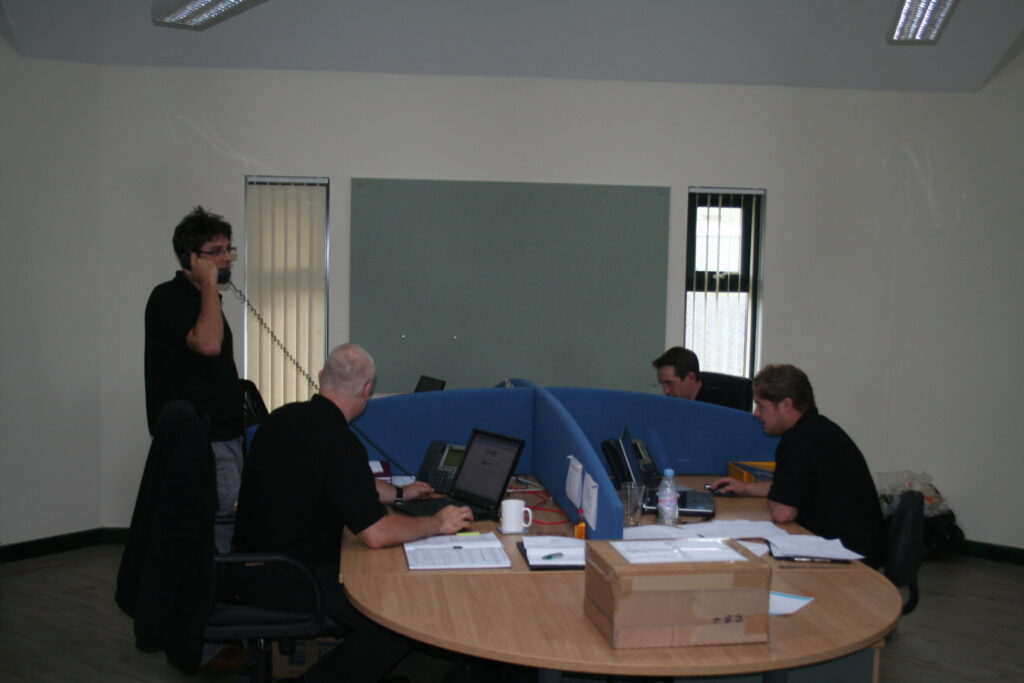

Call us
01209 340120
Email us
info@pirantech.co.uk
Address
Piran Technologies, Pool Innovation Centre, Trevenson Road, Pool, Redruth, TR15 3PL
This month we’re celebrating Piran Tech’s 20th anniversary. As we look back over 20 years of Piran, we caught up with Piran’s Managing Director and founder Dan Pugh, to ask him a few questions about Piran’s origins, memorable moments and lessons learned.


I’m from Cornwall but went to London for my degree, and ended up working for a website design and hosting company there. Living in London I spent a lot of time wishing I was back in Cornwall. I moved to Bristol, which got me a bit closer, and then finally made it back here. The company I’d been working for shut down pretty much as soon as I arrived. I knew I wanted to work in Cornwall, and I noticed there was a gap in the market for an IT company that worked in the way we do, in terms of the certifications and qualifications, working only business to business, and really building long-term relationships with customers. It seemed like the perfect use for my skill set and I’d always wanted to run my own business, so I started Piran with a business partner and here we are 20 years later.
Mostly it’s the happy customers. The feedback we get from our customers where we’ve actively helped them and supported them in doing what they do is always a brilliant feeling. Although troubleshooting and problem solving can be stressful, the best part of this job is the job satisfaction you get when you know you’ve done something that works really well.
We’ve got customers who have been with us for decades, and building those long-lasting relationships, the fact that we retain so many of our customers, is something I’m really proud of.
Most of the memorable moments are good things happening off the back of disasters! Finding better ways to do things after something out of our control went wrong, and having the support of the team when we’re working on a difficult fix.
On another note – we’d been working with the Cornish seafood company FalFish for a long time, and the founder Ian Greet invited me and Alex to an event. It really felt like we were part of the family at that point. His grandson had also done some work experience with us at Piran. We’ve got lots of customers, local Cornish businesses and further afield, where we’ve been working together for so long they’ve become friends. So we’ve got lots of memorable moments like that, where we’ve been able to see our customers grow over decades and work alongside them through the difficult times as well as the good times.
The financial crisis was a scary time. When the financial crisis happened in 2008 we were on holiday; we came back and over the next six months our orders dropped to almost nothing. Covid was also very scary; going into lockdown was a huge adjustment, and then coming out on the other side was another adjustment that we all had to make as a team. But in both of those situations it was stressful but we bounced back much stronger.
Another big challenge for us was when my business partner, who I’d started the business with, left in 2012. We brought Alex [Pugh, Piran’s other director] on board and took over the full running of the business, quite soon after we’d just had a baby and were still feeling the effects of the financial crisis. Turning Piran into a true family-run organisation took a huge amount of work and it was a big transition for us – it’s like having another child! But it was also incredibly rewarding and we’re still working together and we’ve got a brilliant team working alongside us.
People and relationships over profit. Being a family-run company our ethics are really important to us; we need to sleep at night knowing we’ve done the right thing by our customers. Our standards and our customers are our highest priority – do right by your customers and it will all work out.
When I started working in the industry in 1996 the internet was still very new and people I spoke to often dismissed it as something that would never really take off. Wireless didn’t exist.
Now everything is connected and the internet is woven into the fabric of almost every business. Every aspect of a business uses the internet, from databases and online orders to CRMs and VoIP phones. Almost everyone has access to fast, reliable wifi.
The move to the cloud has given everyone a lot more flexibility; people can work from anywhere, communicate more easily, spend less time commuting so they’ve got more time for themselves. I think it’s still very important to maintain the human connections, and now going into the office is more about staying connected with the team than because you need to be there to work.
Dependable. That applies to how we support our customers – always a friendly voice at the end of the phone, the flexibility to support them however they need it – but also to our team, who are brilliant. I’d be lost without them. Seeing the feedback from customers I know they feel the same. Being able to rely on the team when we’re working on something difficult makes doing this job much easier and much more rewarding.
See you in another 20 years!
Whether you're a small team or a fast-growing corporation, putting a secure cyber security plan in place can feel daunting. We're here to help you make sure all the bases are covered.

01209 340120
info@pirantech.co.uk
Piran Technologies, Pool Innovation Centre, Trevenson Road, Pool, Redruth, TR15 3PL